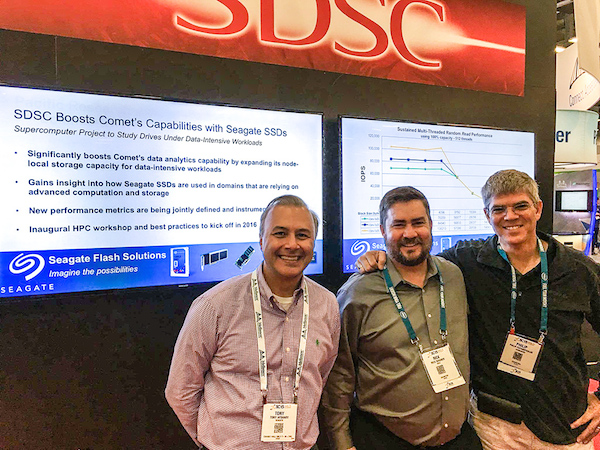HPC’s influence: more energy-efficient appliances, more aerodynamic cars, curing cancer?
For almost three decades, the Supercomputing Conference has spotlighted the latest innovations in the fields of High Performance Computing (HPC), Storage and Analysis. Dubbed SC15, this year’s 27th anniversary conference–held Nov. 15 to Nov. 20 in Austin, Texas–adopted the theme “HPC Transforms,” highlighting the ever growing influence that the HPC movement has been having in transforming all of our lives.
I was among approximately 11,000 people from around the world attending SC15. It was the second time that I had the pleasure of coming to a Supercomputing Conference, and I came away feeling excited about the natural growth of HPC’s influence on our everyday activities. We can now see its influence all around us, as HPC has led to more energy-efficient appliances and more aerodynamic cars by enabling faster research and analysis through simulations. Its footprint can also be found in not-so-everyday events, such as signaling the pathways of tumors to cure cancer and predicting earthquakes well in advance of their striking.
Collaborating with universities, staff and students — the future of HPC
Although Supercomputing used to be an educational conference with a complementary exhibitor hall, the event, has since become an educational conference sporting an exhibitor hall that could put other conferences to shame. Even so, the size of the academia presence at the Supercomputing has grown over the years. This is for good reason, too. Universities, staff and students, after all, are the future of HPC, and what better way to collaborate and attract like-minded individuals than a conference such as this? Event organizers even held a job fair to help identify and train the next generation of HPC specialists.
Seagate was fortunate to join one of our academic partners, San Diego Super Computer (SDSC), on the exhibit floor, where we highlighted the capabilities of the Seagate SSDs enabling its supercomputer project that studies drives under data-intensive workloads. The addition of the SAS drives will boost data analytics capabilities significantly by expanding the supercomputer’s node-local storage capacity for data-intensive workloads.

HPC combining our cloud systems, HDDs and SSDs
In our own Seagate booth, we presented multiple HPC solutions by combining our cloud systems with our HDDs and SSDs. HPC architecture benefits greatly from SSD- and flash-based storage, with significantly improved performance, lower footprint and overall lower OpEx. As we demoed at SC15, the Seagate 1200.2 SAS SSD delivers 3.4 Million IOPS and 76.8TB of storage in a single Seagate OneStor 2U Modular storage enclosure. This highlights our building-block capability, offering complete storage solutions needed for today’s and tomorrow’s data capacity, workloads and applications.
Working with other partners on the exhibitor floor, Seagate flash achieved quite a presence as we showcased our technology. We would like to thank Supermicro for demonstrating Seagate XF1440 NVMe SSDs and Seagate 1200.2 SAS SSDs in their server systems. We would also like to thank Newisys, which showcased its Newisys NSS-2601 enclosure that is deployed with 60 of Seagate’s newest SAS 1200.2 SSDs and achieves lightning fast 49GB/s bandwidth.
The conference brought together a veritable who’s-who of the international supercomputing community. And with an impressive host of exhibits featuring the latest innovations and technologies from industry, academia and government research organizations, it would take much more space than this blog post can afford to address all of the interesting offerings from the conference. In short, however, at the SC15, it was simply inspiring to see all of the innovation in HPC well as where the is taking us. The opportunities, it seems, are endless.







